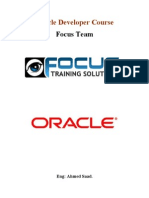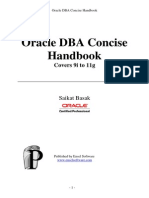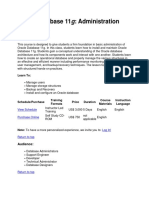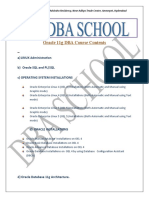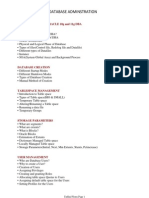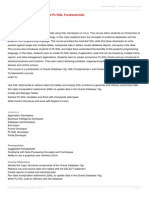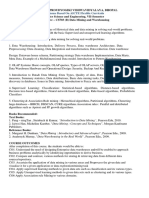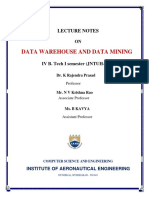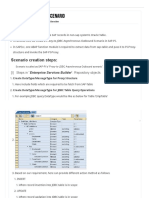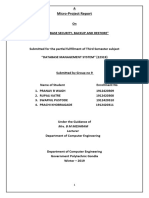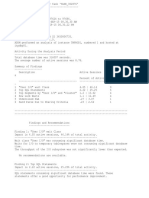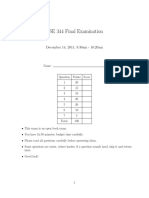0% found this document useful (0 votes)
192 views6 pagesOracle 11g Performance Tuning
This two-day course helps participants learn techniques for optimizing Oracle 11g performance through hands-on training. Topics include troubleshooting application performance using hints, logical and physical database structures, partitioning, materialized views, sorting, indexing and SQL tuning. The course also covers coding techniques like PL/SQL native compilation and bulk binds that enhance SQL and PL/SQL performance. Participants will gain skills in writing and tuning SQL, deploying performance solutions, and ensuring high availability of Oracle 11 databases.
Uploaded by
lukeCopyright
© © All Rights Reserved
We take content rights seriously. If you suspect this is your content, claim it here.
Available Formats
Download as PDF, TXT or read online on Scribd
0% found this document useful (0 votes)
192 views6 pagesOracle 11g Performance Tuning
This two-day course helps participants learn techniques for optimizing Oracle 11g performance through hands-on training. Topics include troubleshooting application performance using hints, logical and physical database structures, partitioning, materialized views, sorting, indexing and SQL tuning. The course also covers coding techniques like PL/SQL native compilation and bulk binds that enhance SQL and PL/SQL performance. Participants will gain skills in writing and tuning SQL, deploying performance solutions, and ensuring high availability of Oracle 11 databases.
Uploaded by
lukeCopyright
© © All Rights Reserved
We take content rights seriously. If you suspect this is your content, claim it here.
Available Formats
Download as PDF, TXT or read online on Scribd
/ 6
















